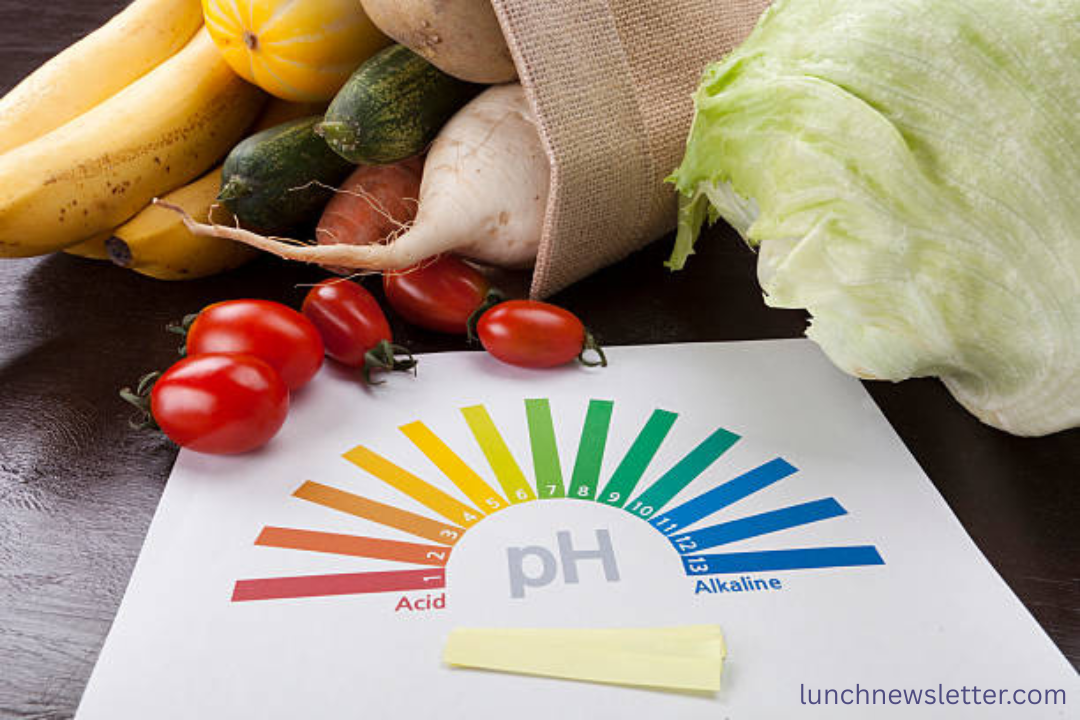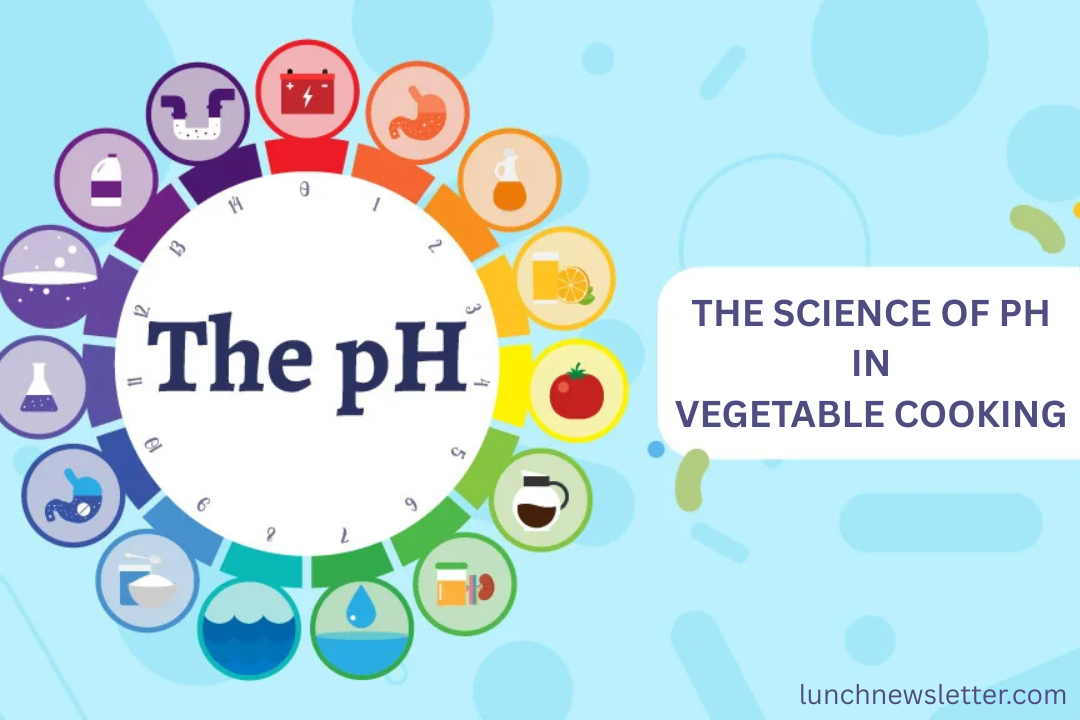Vegetable cooking is both an art and a science, influenced not only by time and temperature but also by the chemistry of pH. From the vibrant green of steamed broccoli to the dull olive of overcooked spinach, pH levels significantly impact the color, texture, and flavor of vegetables. Understanding the role of acidity and alkalinity can help home cooks and professional chefs enhance the quality and appeal of their dishes.
Understanding pH and Its Relevance in Vegetable Cooking
Vegetable cooking is affected by pH because plant-based foods contain natural pigments and compounds that react to acidic or alkaline environments. pH, which measures how acidic or basic a substance is on a scale from 0 to 14, plays a vital role in determining the outcome of many cooking processes.
In vegetable cooking, acidic conditions (pH < 7) often help retain or brighten specific colors, while alkaline conditions (pH > 7) can soften textures or dull colors. Recognizing how these chemical reactions work can improve consistency, flavor, and visual appeal.
Natural Pigments and pH Interaction
Vegetables contain natural pigments like chlorophyll, anthocyanins, carotenoids, and betalains, which all behave differently in various pH environments.
Chlorophyll and Green Vegetables
Chlorophyll is the pigment responsible for the green color in vegetables like spinach, green beans, and kale. During vegetable cooking, exposure to heat and acidic environments breaks down chlorophyll, causing a shift from bright green to dull olive-brown.
- Acidic pH: This leads to the loss of magnesium in chlorophyll molecules, resulting in a less appetizing green.
- Neutral to alkaline pH: Helps preserve color but may cause undesirable texture changes.
Anthocyanins in Red and Purple Vegetables
Found in red cabbage, eggplant, and beets, anthocyanins are sensitive to pH shifts.
- Acidic pH: Maintains or intensifies red and pink hues.
- Alkaline pH: This can cause vegetables to turn blue or green, which may not be desirable.
Understanding how anthocyanins react during vegetable cooking helps control visual presentation and appeal.
Texture and Tenderness in Vegetable Cooking
pH also influences the softness and bite of cooked vegetables. Alkaline environments can break down pectin, the substance that holds plant cells together, resulting in mushy textures. Conversely, acidic environments help vegetables maintain firmness.
Acidic Environments Help Maintain Structure
Adding acidic ingredients like vinegar or lemon juice while cooking vegetables can keep them crisp. This is especially helpful when cooking pickled or marinated vegetables.
Alkaline Environments Accelerate Softening
Baking soda, a common alkaline substance, is sometimes added to water during vegetable cooking to speed up softening. While effective, it can also dull colors and create a soapy aftertaste if used excessively.
Flavor Development and pH Balance
Flavor in vegetable cooking is more than seasoning; it also depends on the pH environment. Acidity can balance bitterness and enhance brightness in vegetables, while alkalinity can mellow flavors but may also cause bitterness in some cases.
- Carrots and sweet potatoes benefit from slight acidity to balance their natural sweetness.
- Brussels sprouts and broccoli taste better with neutral to slightly acidic pH, as high alkalinity can intensify sulfur compounds.
The science behind flavor development in vegetable cooking underscores the importance of pH as a culinary tool.
Practical Applications in Everyday Cooking
Knowing how to manipulate pH levels allows for greater control during vegetable cooking. Below are practical techniques to apply pH science in your kitchen.
Use Vinegar to Preserve Color in Red Vegetables
Red cabbage, beets, and other anthocyanin-rich vegetables maintain their vibrant color when cooked with a splash of vinegar or other acidic ingredients.
Avoid Baking Soda for Green Vegetables
Though baking soda can enhance green hues by maintaining chlorophyll, it often destroys texture and nutritional value, making vegetables limp and unappetizing.
Add Acidity Late for Maximum Texture
When cooking tomatoes with firm vegetables like bell peppers or zucchini, add the tomatoes later in the process. This prevents acid from prematurely toughening the other vegetables.
Cultural and Culinary Examples
Different cuisines around the world take unique approaches to vegetable cooking based on an understanding of pH—consciously or unconsciously.
Japanese Cooking – Precision with pH
Japanese cuisine uses dashi and mirin, which often have subtle acidic properties, to balance vegetable dishes and enhance umami. The result is vibrant, clean flavors that highlight the vegetables ‘ natural taste.
Indian Cuisine – Layered Flavors with Acidity
In Indian cooking, tamarind and lemon juice are added at different stages to control texture and bring out layers of flavor in vegetables like okra, eggplant, and spinach.
These global examples show how pH considerations shape vegetable cooking traditions worldwide.
Health and Nutrition Considerations

pH not only influences taste and appearance but also affects the nutritional profile of vegetables. Heat and alkaline environments may lead to the breakdown of vitamins like vitamin C and B-complex compounds. Acidic cooking mediums tend to preserve these nutrients better.
- Steam over Boil: Steaming vegetables helps retain nutrients better than boiling in alkaline water.
- Acidic Finishing Touch: Squeezing lemon enhances flavor and helps preserve vitamin content after cooking.
Thus, pH awareness in vegetable cooking contributes to health and wellness, in addition to taste and appearance.
Common Mistakes to Avoid
Misjudging pH effects during vegetable cooking can result in common kitchen errors:
- Over-softening green vegetables by using too much baking soda.
- Fading vibrant red or purple colors by not adding acidity.
- Underseasoning is due to misunderstandings about how pH affects flavor balance.
Correcting these mistakes ensures consistent, visually appealing, and nutritious meals.
Experimentation in the Kitchen
Understanding pH is a gateway to creative and precise vegetable cooking. Try these experiments:
- Cook red cabbage in different liquids (water, vinegar, baking soda solution) and observe color changes.
- Test the difference in texture when adding lemon juice at the start vs. end of cooking green beans.
- Make pickled vegetables and note how acidity influences flavor and crunch.
These hands-on activities help solidify the science behind vegetable cooking.
Frequently Asked Questions (FAQ’sFAQ’s)
What is the role of pH in vegetable cooking?
pH affects the color, texture, flavor, and nutritional value of vegetables during cooking. Acidic and alkaline environments cause chemical changes in plant pigments and structure, influencing the final result.
Why do green vegetables turn dull when cooked?
Green vegetables contain chlorophyll, which reacts with acidic environments during cooking, causing the bright green color to fade into a dull olive. This is a common reaction to heat and pH changes.
Can baking soda improve the color of cooked vegetables?
Baking soda can preserve the green color of vegetables by creating an alkaline environment, but it also breaks down cell walls, making vegetables mushy and reducing nutrient content.
How can I maintain bright colors in red or purple vegetables?
Add acidic ingredients such as vinegar or lemon juice to keep vegetables like red cabbage or beets vibrant during cooking. Acid helps stabilize anthocyanin pigments.
Does pH affect the flavor of cooked vegetables?
Yes, pH impacts flavor. Acidity can enhance brightness and reduce bitterness, while alkaline environments may mellow or alter flavors, sometimes making them unpleasant if not balanced correctly.
Is it better to cook vegetables in acidic or alkaline water?
Generally, mildly acidic water helps preserve nutrients and color. Alkaline water may speed up softening but often degrades flavor and nutrition, especially during prolonged cooking.
Can I add acidic ingredients during or after cooking?
Yes, adding acids like lemon juice or vinegar at the end of cooking helps preserve texture and flavor. However, some recipes may call for acidity earlier for desired effects.
Does pH impact the nutritional value of vegetables?
Absolutely. High pH (alkaline) conditions can degrade water-soluble vitamins like vitamin C and some B vitamins. Acidic conditions tend to help preserve these nutrients during cooking.
Conclusion
Vegetable cooking transforms with a deeper understanding of pH. From maintaining vibrant colors to achieving ideal textures and balanced flavors, pH science plays a pivotal role in elevating everyday meals.
Chefs and home cooks alike can benefit from applying pH principles, leading to dishes that are as nutritious as they are visually stunning. By experimenting thoughtfully and embracing the chemistry of vegetable cooking, anyone can achieve better, tastier results.

